The global remote weapon station market is expected to grow from USD 8.53 billion in 2019 to USD 19.24 billion by 2027, at a CAGR of 10.7% during the forecast period 2020-2027.
A remote weapon station or RWS, also known as remote-controlled weapon station is a remotely controlled, weaponized platform fitted with small to medium-sized weapons that can be mounted on aircraft, tanks, other armoured vehicles, naval ships, helicopters etc. They can also come with additional military hardware like thermal sensors and night vision cameras.
This study delivers a comprehensive analysis of weapon type, component, platform, technology, mobility, application and regions. The research includes growth drivers as well as challenges prevalent in the global remote weapon station market along with the impact they will have on the overall demand during the forecasted period. Additionally, the study also includes various opportunities & threats that are present in the remote weapon station market. The weapon type segment includes lethal weapons and non-lethal weapons. The lethal weapons segment is further segmented into small caliber weapons and medium caliber weapons. Due to the rising demand for long-range weaponry, the medium caliber sub-segment is anticipated to dominate the market over the projected period. Based on component, the market has been segmented into weapons & armaments, human-machine interface, and sensors. The sensors segment is forecasted to register the highest growth due to sensor suite and sensor fusion technology. On the basis of platform, the market has been segmented into naval, airborne, and land-based. The land-based segment is said to dominate the market. Countries like India and China are enhancing the offensive capabilities of their land armies by increasing the number of armoured vehicles like battle tanks, armoured personnel carriers, and infantry fighting vehicles. For example, India made a deal with Russia in 2016 to buy 464 T-90 main battle tanks. The technology segment comprises of close-in weapon systems, remote-controlled gun systems, and others. Based on mobility, the remote weapon station market has been segmented into stationary and dynamic. Based on application, the global market has been segmented into military and homeland security. The military segment dominated the market because of the increased use of non-lethal and active weapons in militaries around the world.
The market has been divided into North America, Europe, Asia-Pacific, Middle East & Africa, and South America. With the military-industrial expansion, cross border terrorism and rising military budgets of emerging economies like India and China, the Asia-Pacific region stands as a promising market for remote weapon station and is expected to grow at the highest CAGR during the forecast period. Even developed countries like Japan are ramping up their defence budgets to face Chinese naval aggression and territorial claims over a group of islands located in the East China Sea known as the Senkaku Islands (as called by Japan) or the Diaoyu Islands (as called by China). In 2018, China accounted for the majority share of the APAC market.
Some of the notable players in the remote weapon station market are Rheinmetall AG, Raytheon Company, Rafael Advanced Defense Systems, Electro Optic Systems, Kongsberg Gruppen, Saab AB, FN Herstal, BAE Systems, Leonardo S.p.A., Elbit Systems, and ASELSAN A.Åž., among others. The key players are now concentrating on implementing strategies such as adopting new technology, product innovations, mergers & acquisitions, joint venture, alliances, and partnerships to improve their market position in the global remote weapon station industry.
This study predicts revenue growth at global, national, and country levels from 2020 to 2027. Fior Markets has segmented the market based on below-mentioned segments:
Global Remote Weapon Station Market Analysis And Forecast, By Weapon Type
Global Remote Weapon Station Market Analysis And Forecast, By Component
Global Remote Weapon Station Market Analysis And Forecast, By Platform
Global Remote Weapon Station Market Analysis And Forecast, By Technology
Global Remote Weapon Station Market Analysis And Forecast, By Mobility
Global Remote Weapon Station Market Analysis And Forecast, By Application
Global Remote Weapon Station Market Analysis And Forecast, By Regional Analysis
Report Description:
1. Introduction
1.1. Objectives of the Study
1.2. Market Definition
1.3. Research Scope
1.4. Currency
1.5. Key Target Audience
2. Research Methodology and Assumptions
3. Executive Summary
4. Premium Insights
4.1. Porter’s Five Forces Analysis
4.2. Value Chain Analysis
4.3. Top Investment Pockets
4.3.1. Market Attractiveness Analysis By Weapon Type
4.3.2. Market Attractiveness Analysis By Component
4.3.3. Market Attractiveness Analysis By Platform
4.3.4. Market Attractiveness Analysis By Technology
4.3.5. Market Attractiveness Analysis By Mobility
4.3.6. Market Attractiveness Analysis By Application
4.3.7. Market Attractiveness Analysis By Region
4.4. Industry Trends
5. Market Dynamics
5.1. Market Evaluation
5.2. Drivers
5.2.1. Rising demand for remote weapon stations in military applications
5.3. Restraints
5.3.1. Complexity in the integration of remote weapon stations with other platforms
5.4. Opportunities
5.4.1. Rising geopolitical tensions worldwide
6. Global Remote Weapon Station Market Analysis and Forecast, By Weapon Type
6.1. Segment Overview
6.2. Lethal Weapons
6.3. Non-Lethal Weapons
7. Global Remote Weapon Station Market Analysis and Forecast, By Component
7.1. Segment Overview
7.2. Weapons & Armaments
7.3. Human-Machine Interface
7.4. Sensors
8. Global Remote Weapon Station Market Analysis and Forecast, By Platform
8.1. Segment Overview
8.2. Naval
8.3. Airborne
8.4. Land-Based
9. Global Remote Weapon Station Market Analysis and Forecast, By Technology
9.1. Segment Overview
9.2. Close-In Weapon Systems
9.3. Remote-Controlled Gun Systems
9.4. Others
10. Global Remote Weapon Station Market Analysis and Forecast, By Mobility
10.1. Segment Overview
10.2. Stationary
10.3. Dynamic
11. Global Remote Weapon Station Market Analysis and Forecast, By Application
11.1. Segment Overview
11.2. Military
11.3. Homeland Security
12. Global Remote Weapon Station Market Analysis and Forecast, By Regional Analysis
12.1. Segment Overview
12.2. North America
12.2.1. U.S.
12.2.2. Canada
12.2.3. Mexico
12.3. Europe
12.3.1. Germany
12.3.2. France
12.3.3. U.K.
12.3.4. Italy
12.3.5. Spain
12.4. Asia-Pacific
12.4.1. Japan
12.4.2. China
12.4.3. India
12.5. South America
12.5.1. Brazil
12.6. Middle East and Africa
12.6.1. UAE
12.6.2. South Africa
13. Global Remote Weapon Station Market-Competitive Landscape
13.1. Overview
13.2. Market Share of Key Players in Global Remote Weapon Station Market
13.2.1. Global Company Market Share
13.2.2. North America Company Market Share
13.2.3. Europe Company Market Share
13.2.4. APAC Company Market Share
13.3. Competitive Situations and Trends
13.3.1. Applications, Launches, and Developments
13.3.2. Partnerships Collaborations and Agreements
13.3.3. Mergers & Acquisitions
13.3.4. Expansions
14. Company Profiles
14.1. Rheinmetall AG
14.1.1. Business Overview
14.1.2. Company Snapshot
14.1.3. Company Market Share Analysis
14.1.4. Company Product Portfolio
14.1.5. Recent Developments
14.1.6. SWOT Analysis
14.2. Raytheon Company
14.2.1. Business Overview
14.2.2. Company Snapshot
14.2.3. Company Market Share Analysis
14.2.4. Company Product Portfolio
14.2.5. Recent Developments
14.2.6. SWOT Analysis
14.3. Rafael Advanced Defense Systems
14.3.1. Business Overview
14.3.2. Company Snapshot
14.3.3. Company Market Share Analysis
14.3.4. Company Product Portfolio
14.3.5. Recent Developments
14.3.6. SWOT Analysis
14.4. Electro Optic Systems
14.4.1. Business Overview
14.4.2. Company Snapshot
14.4.3. Company Market Share Analysis
14.4.4. Company Product Portfolio
14.4.5. Recent Developments
14.4.6. SWOT Analysis
14.5. Kongsberg Gruppen
14.5.1. Business Overview
14.5.2. Company Snapshot
14.5.3. Company Market Share Analysis
14.5.4. Company Product Portfolio
14.5.5. Recent Developments
14.5.6. SWOT Analysis
14.6. Saab AB
14.6.1. Business Overview
14.6.2. Company Snapshot
14.6.3. Company Market Share Analysis
14.6.4. Company Product Portfolio
14.6.5. Recent Developments
14.6.6. SWOT Analysis
14.7. FN Herstal
14.7.1. Business Overview
14.7.2. Company Snapshot
14.7.3. Company Market Share Analysis
14.7.4. Company Product Portfolio
14.7.5. Recent Developments
14.7.6. SWOT Analysis
14.8. BAE Systems
14.8.1. Business Overview
14.8.2. Company Snapshot
14.8.3. Company Market Share Analysis
14.8.4. Company Product Portfolio
14.8.5. Recent Developments
14.8.6. SWOT Analysis
14.9. Leonardo S.p.A.
14.9.1. Business Overview
14.9.2. Company Snapshot
14.9.3. Company Market Share Analysis
14.9.4. Company Product Portfolio
14.9.5. Recent Developments
14.9.6. SWOT Analysis
14.10. Elbit Systems
14.10.1. Business Overview
14.10.2. Company Snapshot
14.10.3. Company Market Share Analysis
14.10.4. Company Product Portfolio
14.10.5. Recent Developments
14.10.6. SWOT Analysis
14.11. ASELSAN A.Åž.
14.11.1. Business Overview
14.11.2. Company Snapshot
14.11.3. Company Market Share Analysis
14.11.4. Company Product Portfolio
14.11.5. Recent Developments
14.11.6. SWOT Analysis
List of Table
1. Global Remote Weapon Station Market, By Weapon Type, 2019-2027 (USD Billion)(K Units)
2. Global Lethal Weapons, Remote Weapon Station Market, By Region, 2019-2027 (USD Billion)(K Units)
3. Global Non-Lethal Weapons, Remote Weapon Station Market, By Region, 2019-2027 (USD Billion)(K Units)
4. Global Remote Weapon Station Market, By Component, 2019-2027 (USD Billion)(K Units)
5. Global Weapons & Armaments, Remote Weapon Station Market, By Region, 2019-2027 (USD Billion)(K Units)
6. Global Human-Machine Interface, Remote Weapon Station Market, By Region, 2019-2027 (USD Billion)(K Units)
7. Global Sensors, Remote Weapon Station Market, By Region, 2019-2027 (USD Billion)(K Units)
8. Global Remote Weapon Station Market, By Platform, 2019-2027 (USD Billion)(K Units)
9. Global Naval, Remote Weapon Station Market, By Region, 2019-2027 (USD Billion)(K Units)
10. Global Airborne, Remote Weapon Station Market, By Region, 2019-2027 (USD Billion)(K Units)
11. Global Land-Based, Remote Weapon Station Market, By Region, 2019-2027 (USD Billion)(K Units)
12. Global Remote Weapon Station Market, By Technology, 2019-2027 (USD Billion)(K Units)
13. Global Close-In Weapon Systems, Remote Weapon Station Market, By Region, 2019-2027 (USD Billion)(K Units)
14. Global Remote-Controlled Gun Systems, Remote Weapon Station Market, By Region, 2019-2027 (USD Billion)(K Units)
15. Global Others, Remote Weapon Station Market, By Region, 2019-2027 (USD Billion)(K Units)
16. Global Remote Weapon Station Market, By Mobility, 2019-2027 (USD Billion)(K Units)
17. Global Stationary, Remote Weapon Station Market, By Region, 2019-2027 (USD Billion)(K Units)
18. Global Dynamic, Remote Weapon Station Market, By Region, 2019-2027 (USD Billion)(K Units)
19. Global Remote Weapon Station Market, By Application, 2019-2027 (USD Billion)(K Units)
20. Global Military, Remote Weapon Station Market, By Region, 2019-2027 (USD Billion)(K Units)
21. Global Homeland Security, Remote Weapon Station Market, By Region, 2019-2027 (USD Billion)(K Units)
22. North America Remote Weapon Station Market, By Weapon Type, 2019-2027 (USD Billion)(K Units)
23. North America Remote Weapon Station Market, By Component, 2019-2027 (USD Billion)(K Units)
24. North America Remote Weapon Station Market, By Platform, 2019-2027 (USD Billion)(K Units)
25. North America Remote Weapon Station Market, By Technology 2019-2027 (USD Billion)(K Units)
26. North America Remote Weapon Station Market, By Mobility 2019-2027 (USD Billion)(K Units)
27. North America Remote Weapon Station Market, By Application 2019-2027 (USD Billion)(K Units)
28. U.S. Remote Weapon Station Market, By Weapon Type, 2019-2027 (USD Billion)(K Units)
29. U.S. Remote Weapon Station Market, By Component, 2019-2027 (USD Billion)(K Units)
30. U.S. Remote Weapon Station Market, By Platform, 2019-2027 (USD Billion)(K Units)
31. U.S. Remote Weapon Station Market, By Technology, 2019-2027 (USD Billion)(K Units)
32. U.S. Remote Weapon Station Market, By Mobility 2019-2027 (USD Billion)(K Units)
33. U.S. Remote Weapon Station Market, By Application 2019-2027 (USD Billion)(K Units)
34. Canada Remote Weapon Station Market, By Weapon Type, 2019-2027 (USD Billion)(K Units)
35. Canada Remote Weapon Station Market, By Component, 2019-2027 (USD Billion)(K Units)
36. Canada Remote Weapon Station Market, By Platform, 2019-2027 (USD Billion)(K Units)
37. Canada Remote Weapon Station Market, By Technology, 2019-2027 (USD Billion)(K Units)
38. Canada Remote Weapon Station Market, By Mobility 2019-2027 (USD Billion)(K Units)
39. Canada Remote Weapon Station Market, By Application 2019-2027 (USD Billion)(K Units)
40. Mexico Remote Weapon Station Market, By Weapon Type, 2019-2027 (USD Billion)(K Units)
41. Mexico Remote Weapon Station Market, By Component, 2019-2027 (USD Billion)(K Units)
42. Mexico Remote Weapon Station Market, By Platform, 2019-2027 (USD Billion)(K Units)
43. Mexico Remote Weapon Station Market, By Technology, 2019-2027 (USD Billion)(K Units)
44. Mexico Remote Weapon Station Market, By Mobility 2019-2027 (USD Billion)(K Units)
45. Mexico Remote Weapon Station Market, By Application 2019-2027 (USD Billion)(K Units)
46. Europe Remote Weapon Station Market, By Weapon Type, 2019-2027 (USD Billion)(K Units)
47. Europe Remote Weapon Station Market, By Component, 2019-2027 (USD Billion)(K Units)
48. Europe Remote Weapon Station Market, By Platform, 2019-2027 (USD Billion)(K Units)
49. Europe Remote Weapon Station Market, By Technology, 2019-2027 (USD Billion)(K Units)
50. Europe Remote Weapon Station Market, By Mobility 2019-2027 (USD Billion)(K Units)
51. Europe Remote Weapon Station Market, By Application 2019-2027 (USD Billion)(K Units)
52. Germany Remote Weapon Station Market, By Weapon Type, 2019-2027 (USD Billion)(K Units)
53. Germany Remote Weapon Station Market, By Component, 2019-2027 (USD Billion)(K Units)
54. Germany Remote Weapon Station Market, By Platform, 2019-2027 (USD Billion)(K Units)
55. Germany Remote Weapon Station Market, By Technology, 2019-2027 (USD Billion)(K Units)
56. Germany Remote Weapon Station Market, By Mobility 2019-2027 (USD Billion)(K Units)
57. Germany Remote Weapon Station Market, By Application 2019-2027 (USD Billion)(K Units)
58. France Remote Weapon Station Market, By Weapon Type, 2019-2027 (USD Billion)(K Units)
59. France Remote Weapon Station Market, By Component, 2019-2027 (USD Billion)(K Units)
60. France Remote Weapon Station Market, By Platform, 2019-2027 (USD Billion)(K Units)
61. France Remote Weapon Station Market, By Technology, 2019-2027 (USD Billion)(K Units)
62. France Remote Weapon Station Market, By Mobility 2019-2027 (USD Billion)(K Units)
63. France Remote Weapon Station Market, By Application 2019-2027 (USD Billion)(K Units)
64. U.K. Remote Weapon Station Market, By Weapon Type, 2019-2027 (USD Billion)(K Units)
65. U.K. Remote Weapon Station Market, By Component, 2019-2027 (USD Billion)(K Units)
66. U.K. Remote Weapon Station Market, By Platform, 2019-2027 (USD Billion)(K Units)
67. U.K. Remote Weapon Station Market, By Technology, 2019-2027 (USD Billion)(K Units)
68. U.K. Remote Weapon Station Market, By Mobility 2019-2027 (USD Billion)(K Units)
69. U.K. Remote Weapon Station Market, By Application 2019-2027 (USD Billion)(K Units)
70. Italy Remote Weapon Station Market, By Weapon Type, 2019-2027 (USD Billion)(K Units)
71. Italy Remote Weapon Station Market, By Component, 2019-2027 (USD Billion)(K Units)
72. Italy Remote Weapon Station Market, By Platform, 2019-2027 (USD Billion)(K Units)
73. Italy Remote Weapon Station Market, By Technology, 2019-2027 (USD Billion)(K Units)
74. Italy Remote Weapon Station Market, By Mobility 2019-2027 (USD Billion)(K Units)
75. Italy Remote Weapon Station Market, By Application 2019-2027 (USD Billion)(K Units)
76. Spain Remote Weapon Station Market, By Weapon Type, 2019-2027 (USD Billion)(K Units)
77. Spain Remote Weapon Station Market, By Component, 2019-2027 (USD Billion)(K Units)
78. Spain Remote Weapon Station Market, By Platform, 2019-2027 (USD Billion)(K Units)
79. Spain Remote Weapon Station Market, By Technology, 2019-2027 (USD Billion)(K Units)
80. Spain Remote Weapon Station Market, By Mobility 2019-2027 (USD Billion)(K Units)
81. Spain Remote Weapon Station Market, By Application 2019-2027 (USD Billion)(K Units)
82. Asia Pacific Remote Weapon Station Market, By Weapon Type, 2019-2027 (USD Billion)(K Units)
83. Asia Pacific Remote Weapon Station Market, By Component, 2019-2027 (USD Billion)(K Units)
84. Asia Pacific Remote Weapon Station Market, By Platform, 2019-2027 (USD Billion)(K Units)
85. Asia Pacific Remote Weapon Station Market, By Technology, 2019-2027 (USD Billion)(K Units)
86. Asia Pacific Remote Weapon Station Market, By Mobility 2019-2027 (USD Billion)(K Units)
87. Asia Pacific Remote Weapon Station Market, By Application 2019-2027 (USD Billion)(K Units)
88. Japan Remote Weapon Station Market, By Weapon Type, 2019-2027 (USD Billion)(K Units)
89. Japan Remote Weapon Station Market, By Component, 2019-2027 (USD Billion)(K Units)
90. Japan Remote Weapon Station Market, By Platform, 2019-2027 (USD Billion)(K Units)
91. Japan Remote Weapon Station Market, By Technology, 2019-2027 (USD Billion)(K Units)
92. Japan Remote Weapon Station Market, By Mobility 2019-2027 (USD Billion)(K Units)
93. Japan Remote Weapon Station Market, By Application 2019-2027 (USD Billion)(K Units)
94. China Remote Weapon Station Market, By Weapon Type, 2019-2027 (USD Billion)(K Units)
95. China Remote Weapon Station Market, By Component, 2019-2027 (USD Billion)(K Units)
96. China Remote Weapon Station Market, By Platform, 2019-2027 (USD Billion)(K Units)
97. China Remote Weapon Station Market, By Technology, 2019-2027 (USD Billion)(K Units)
98. China Remote Weapon Station Market, By Mobility 2019-2027 (USD Billion)(K Units)
99. China Remote Weapon Station Market, By Application 2019-2027 (USD Billion)(K Units)
100. India Remote Weapon Station Market, By Weapon Type, 2019-2027 (USD Billion)(K Units)
101. India Remote Weapon Station Market, By Component, 2019-2027 (USD Billion)(K Units)
102. India Remote Weapon Station Market, By Platform, 2019-2027 (USD Billion)(K Units)
103. India Remote Weapon Station Market, By Technology, 2019-2027 (USD Billion)(K Units)
104. India Remote Weapon Station Market, By Mobility 2019-2027 (USD Billion)(K Units)
105. India Remote Weapon Station Market, By Application 2019-2027 (USD Billion)(K Units)
106. South America Remote Weapon Station Market, By Weapon Type, 2019-2027 (USD Billion)(K Units)
107. South America Remote Weapon Station Market, By Component, 2019-2027 (USD Billion)(K Units)
108. South America Remote Weapon Station Market, By Platform, 2019-2027 (USD Billion)(K Units)
109. South America Remote Weapon Station Market, By Technology, 2019-2027 (USD Billion)(K Units)
110. South America Remote Weapon Station Market, By Mobility 2019-2027 (USD Billion)(K Units)
111. South America Remote Weapon Station Market, By Application 2019-2027 (USD Billion)(K Units)
112. Brazil Remote Weapon Station Market, By Weapon Type, 2019-2027 (USD Billion)(K Units)
113. Brazil Remote Weapon Station Market, By Component, 2019-2027 (USD Billion)(K Units)
114. Brazil Remote Weapon Station Market, By Platform, 2019-2027 (USD Billion)(K Units)
115. Brazil Remote Weapon Station Market, By Technology, 2019-2027 (USD Billion)(K Units)
116. Brazil Remote Weapon Station Market, By Mobility 2019-2027 (USD Billion)(K Units)
117. Brazil Remote Weapon Station Market, By Application 2019-2027 (USD Billion)(K Units)
118. Middle East and Africa Remote Weapon Station Market, By Weapon Type, 2019-2027 (USD Billion)(K Units)
119. Middle East and Africa Remote Weapon Station Market, By Component, 2019-2027 (USD Billion)(K Units)
120. Middle East and Africa Remote Weapon Station Market, By Platform, 2019-2027 (USD Billion)(K Units)
121. Middle East and Africa Remote Weapon Station Market, By Technology, 2019-2027 (USD Billion)(K Units)
122. Middle East and Africa Remote Weapon Station Market, By Mobility 2019-2027 (USD Billion)(K Units)
123. Middle East and Africa Remote Weapon Station Market, By Application 2019-2027 (USD Billion)(K Units)
124. UAE Remote Weapon Station Market, By Weapon Type, 2019-2027 (USD Billion)(K Units)
125. UAE Remote Weapon Station Market, By Component, 2019-2027 (USD Billion)(K Units)
126. UAE Remote Weapon Station Market, By Platform, 2019-2027 (USD Billion)(K Units)
127. UAE Remote Weapon Station Market, By Technology, 2019-2027 (USD Billion)(K Units)
128. UAE Remote Weapon Station Market, By Mobility 2019-2027 (USD Billion)(K Units)
129. UAE Remote Weapon Station Market, By Application 2019-2027 (USD Billion)(K Units)
130. South Africa Remote Weapon Station Market, By Weapon Type, 2019-2027 (USD Billion)(K Units)
131. South Africa Remote Weapon Station Market, By Component, 2019-2027 (USD Billion)(K Units)
132. South Africa Remote Weapon Station Market, By Platform, 2019-2027 (USD Billion)(K Units)
133. South Africa Remote Weapon Station Market, By Technology, 2019-2027 (USD Billion)(K Units)
134. South Africa Remote Weapon Station Market, By Mobility 2019-2027 (USD Billion)(K Units)
135. South Africa Remote Weapon Station Market, By Application 2019-2027 (USD Billion)(K Units)
List of Figures
1. Global Remote Weapon Station Market Segmentation
2. Global Remote Weapon Station Market: Research Methodology
3. Market Size Estimation Methodology: Bottom-Up Approach
4. Market Size Estimation Methodology: Top-Down Approach
5. Data Triangulation
6. Porter’s Five Forces Analysis
7. Value Chain Analysis
8. Global Remote Weapon Station Market Attractiveness Analysis By Weapon Type
9. Global Remote Weapon Station Market Attractiveness Analysis By Component
10. Global Remote Weapon Station Market Attractiveness Analysis By Platform
11. Global Remote Weapon Station Market Attractiveness Analysis By Technology
12. Global Remote Weapon Station Market Attractiveness Analysis By Mobility
13. Global Remote Weapon Station Market Attractiveness Analysis By Application
14. Global Remote Weapon Station Market Attractiveness Analysis By Region
15. Global Remote Weapon Station Market: Dynamics
16. Global Remote Weapon Station Market Share by Weapon Type (2020 & 2027)
17. Global Remote Weapon Station Market Share by Component (2020 & 2027)
18. Global Remote Weapon Station Market Share by Platform (2020 & 2027)
19. Global Remote Weapon Station Market Share by Technology (2020 & 2027)
20. Global Remote Weapon Station Market Share by Mobility (2020 & 2027)
21. Global Remote Weapon Station Market Share by Application (2020 & 2027)
22. Global Remote Weapon Station Market Share by Regions (2020 & 2027)
23. Global Remote Weapon Station Market Share by Company (2019)
Market research is a method of gathering, assessing and deducing data & information about a particular market. Market research is very crucial in these days. The techniques analyze about how a product/service can be offered to the market to its end-customers, observe the impact of that product/service based on the past customer experiences, and cater their needs and demands. Owing to the successful business ventures, accurate, relevant and thorough information is the base for all the organizations because market research report/study offers specific market related data & information about the industry growth prospects, perspective of the existing customers, and the overall market scenario prevailed in past, ongoing present and developing future. It allows the stakeholders and investors to determine the probability of a business before committing substantial resources to the venture. Market research helps in solving the marketing issues challenges that a business will most likely face.
Market research is valuable because of the following reasons:
Our research report features both the aspects; qualitative and quantitative. Qualitative part provides insights about the market driving forces, potential opportunities, customer’s demands and requirement which in turn help the companies to come up with new strategies in order to survive in the long run competition. The quantitative segment offers the most credible information related to the industry. Based on the data gathering, we use to derive the market size and estimate their future growth prospects on the basis of global, region and country.
Our market research process involves with the four specific stages.
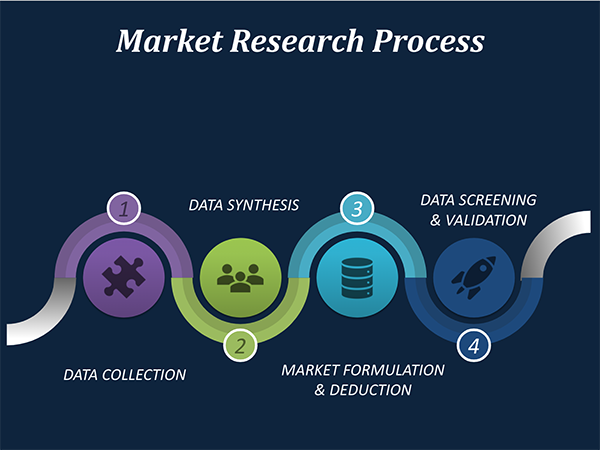
Data Collection: This stage of the market research process involves with the gathering and collecting of the market/industry related data from the sources. There are basically two types of research methods:
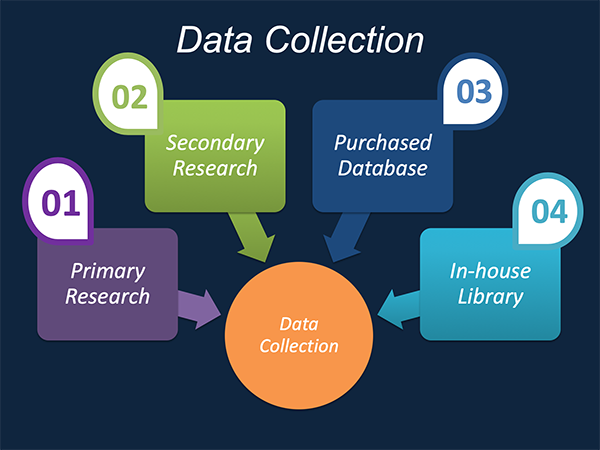
Data Synthesis: This stage includes the evaluation and assessment of all the data acquired from the primary and secondary research. It likewise includes in evaluating the information for any disparity watched while information gathering identified with the market. The data & information is gathered with consideration to the heterogeneity of sources. Scientific and statistical methods are implemented for synthesizing dissimilar information sets and provide the relevant data which is fundamental for formulating strategies. Our organization has broad involvement with information amalgamation where the information goes through different stages:
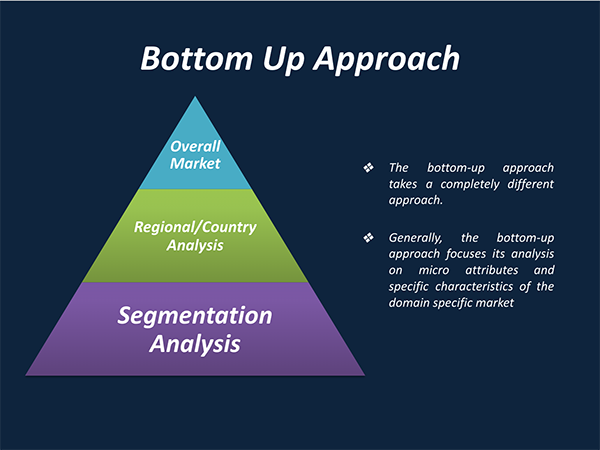
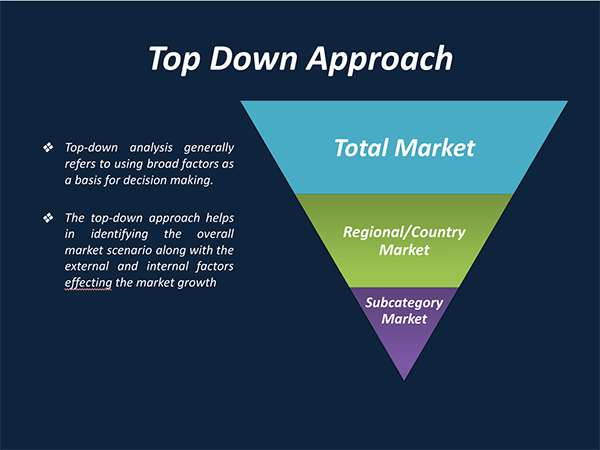
Market Formulation & Deduction: The last stage includes assigning the data & information in a suitable way in order to derive market size. Analyst reviews and domain based opinions based on holistic approach of market estimation combined with industry investigation additionally features a crucial role in this stage.
This stage includes with the finalization of the market size and numbers that we have gathered from primary and secondary research. With the data & information addition, we ensure that there is no gap in the market information. Market trend analysis is finished by our analysts by utilizing data extrapolation procedures, which give the most ideal figures to the market.
Data Validation: Validation is the most crucial step in the process. Validation & re-validation through scientifically designed technique and process that helps us finalize data-points to be used for final calculations. This stage also involves with the data triangulation process. Data triangulation generally implicates the cross validation and matching the data which has been collected from primary and secondary research methods.
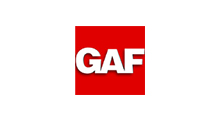

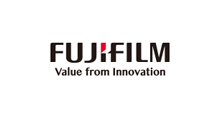


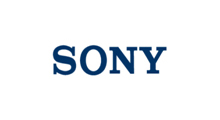
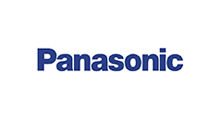
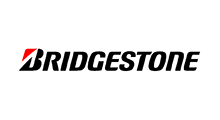
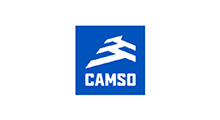
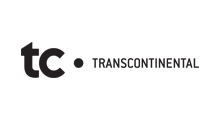
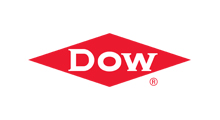
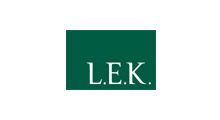
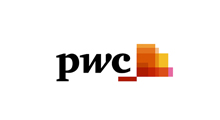




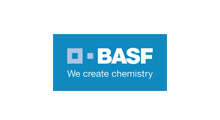
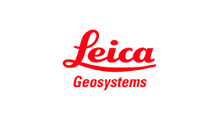
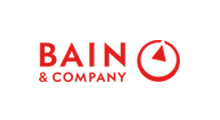
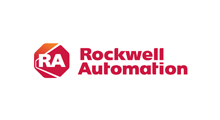
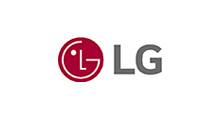
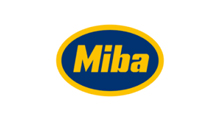
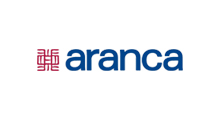
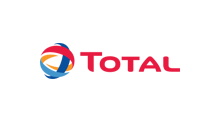
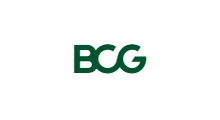
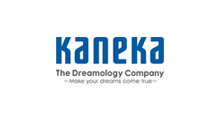
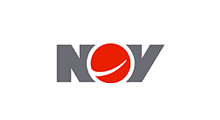
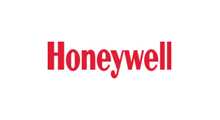

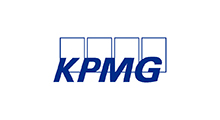
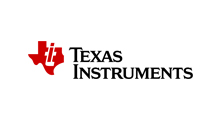
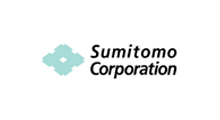
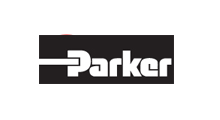

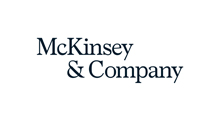
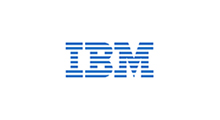
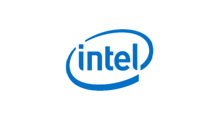
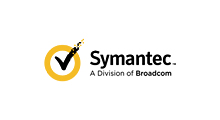
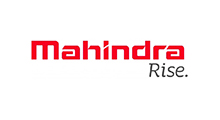
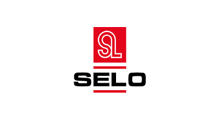

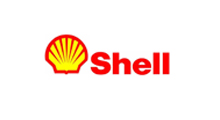
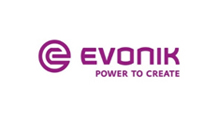
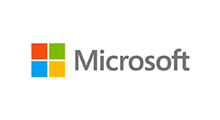
Free Customization
Countries can be added on demand
Free yearly update on purchase of Multi/Corporate User License
Companies served till date

We serve our customers 24x7 for 365 days through calls, emails and live chat options.

Huge database of exceptional market reports bringing market intelligence to your fingertips.

SSL enabled, we offer you various secured payment options for risk free purchase.